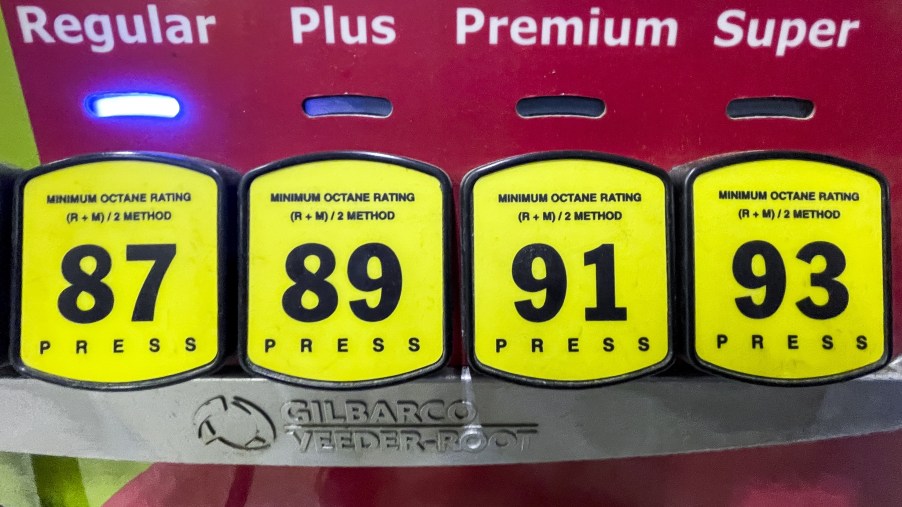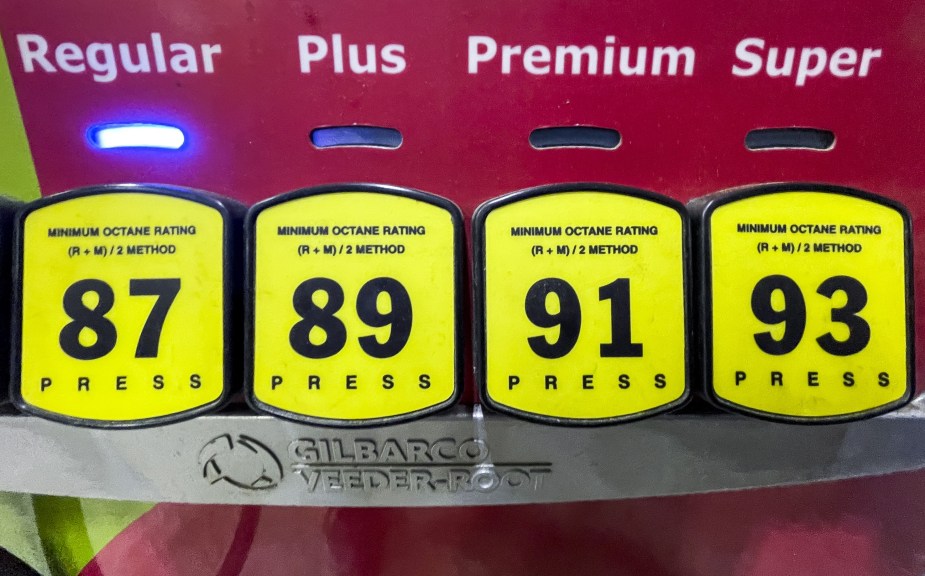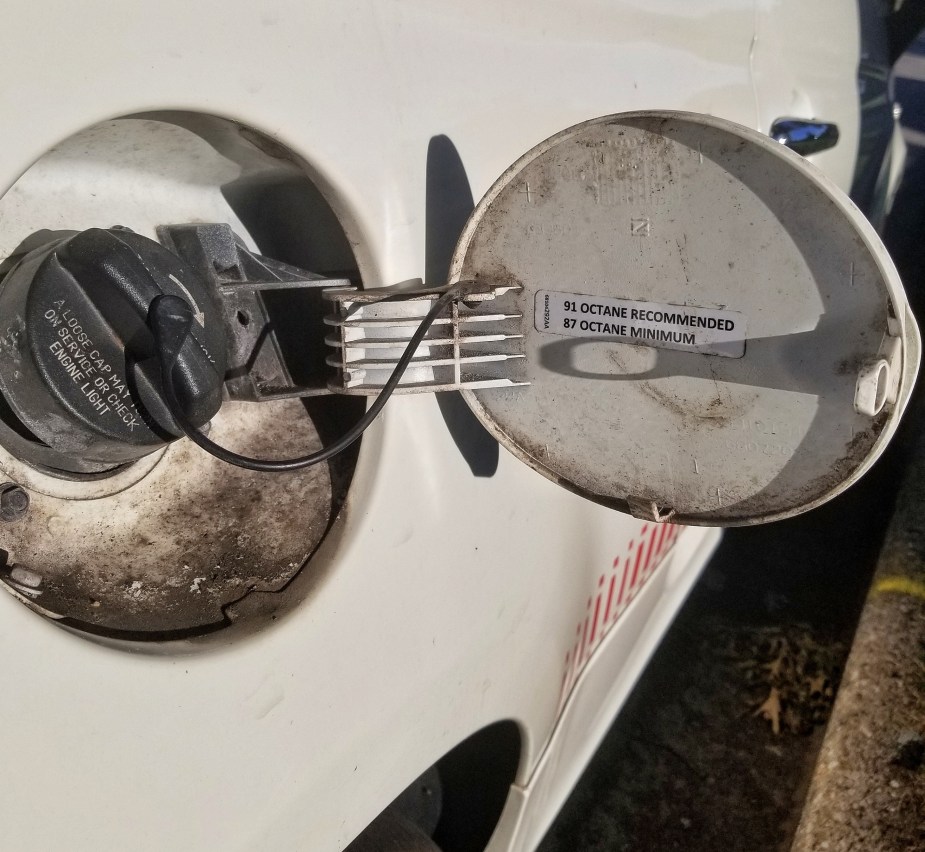
Does My Car Really Need Premium Gas?
Premium gas requirements article highlights:
- The main difference between regular and premium gas is their octane ratings, which measure premature detonation resistance
- Octane is extremely important for modern engines because of turbocharging, which is why premium fuel is often recommended, and for high-performance cars, required
- However, if your car only recommends high-octane gasoline, but doesn’t require it, it can use regular gas, though it won’t be as powerful
Now that gas prices are in the stratosphere, people understandably want to save money when they fill their cars’ tanks. Some are desperate enough to add water to their gasoline, which will really have the opposite effect. Others, meanwhile, besides researching fuel-saving tips, are second-guessing buying expensive premium gas, even if their cars recommend it. But cutting costs this way isn’t necessarily a good idea.
Premium gas and regular gas aren’t quite the same

If you put a glass of premium gas next to one filled with regular gas from the same station, you’d think they were identical. And on a chemical level, they basically are. Modern gasoline contains a mix of hydrocarbons made by refining oil as well as detergents, oxidizers, and other additives such as ethanol. These additives help gasoline burn cleanly and more completely as well as clean parts of your engine. Unfortunately, they also make gasoline spoil faster, but that’s another matter.
Because premium gas and regular gas are chemically nearly identical, they’re also equally energy-dense. So, no, putting premium gas in a car that takes regular won’t automatically boost your horsepower. However, the reverse case—putting regular fuel in a premium-rated car—will at the very least reduce its performance. But it has nothing to do with how much energy is in that gallon of gasoline. Instead, it has to do with octane ratings.
A fuel’s octane rating—that 87, 89, 93, etc. you see at the gas pump—measures how well it resists premature detonation, aka ‘knock’ or ‘pinging,’ which causes engine damage. The name and scale are based on the hydrocarbon octane, which is rated at 100. If a particular gasoline blend, knocks even less than octane, it has a rating of over 100.
Although premium gas is still a blend of hydrocarbons, it usually has more long-chain ones than low-octane regular gas. These resist knocking better, which is why premium gasoline has a higher octane rating than regular gasoline. Usually, premium is at least 91-octane, while regular is typically 87-octane.
Also, premium gas often has higher concentrations of detergents and octane-boosting additives than regular gas. Those detergents help flush away engine carbon deposits, which often cause pinging. However, it’s the octane rating that really separates premium from regular.
Why do some cars ask for premium gas?
Now, premature detonation is bad for every engine, vintage or modern. However, it’s particularly worrying these days because so many cars have turbocharged engines. Remember, turbochargers work by squeezing more air into the combustion chamber, which lets the engine dump in more fuel to make more power. But this puts even more stress on the engine’s internals, which makes anti-pinging absolutely vital.
The good news is modern engines have sensors and electronics that can adjust ignition timing, fuel delivery, and boost pressure if pinging occurs. But this also means reducing performance, i.e., less horsepower and torque. That’s why a lot of high-end luxury cars, performance cars, and especially exotic supercars require high-octane premium gas. Without it, their highly-strung engines couldn’t safely make maximum power. And in some cases, the engine wouldn’t run properly at all.
Can your car run on regular if you absolutely must?

There’s more good news, though. If you look at the photo of my 2013 Fiat 500 Abarth’s fuel-filler door, you’ll notice that it has an octane rating sticker. This sticker says 91-octane premium gas is ‘recommended,’ but not ‘required,’ while the minimum octane required is 87. Technically, I could run the Abarth’s turbocharged engine on regular gas and it wouldn’t mind, though again, it wouldn’t run at its full potential power.
And the Abarth isn’t alone in the ability to freely switch between octane ratings, Cars.com reports. Several Mazda models, for example, can also run on regular or premium. As Mazda details on its website, putting premium gas in your tank will let the engine make more power. However, the engines won’t suffer if you can’t afford the highest-octane fuel. If your car’s manual or fuel-filler sticker states that premium gas is required, though, you don’t have a choice.
But if you do accidentally put a bit of regular in the tank, it’s not the end of the world. If it’s only a bit of low-octane gas, just fill up the rest of the way with high-octane fuel. Then, once you’ve burned some of the mix off during gentle driving, fill it back up with premium, Cars.com explains.
In short, yes, some cars really do need premium gas, and there’s no way around it. But unless the manufacturer says that it’s required, you should be OK if you fill up with regular.
Follow more updates from MotorBiscuit on our Facebook page.


